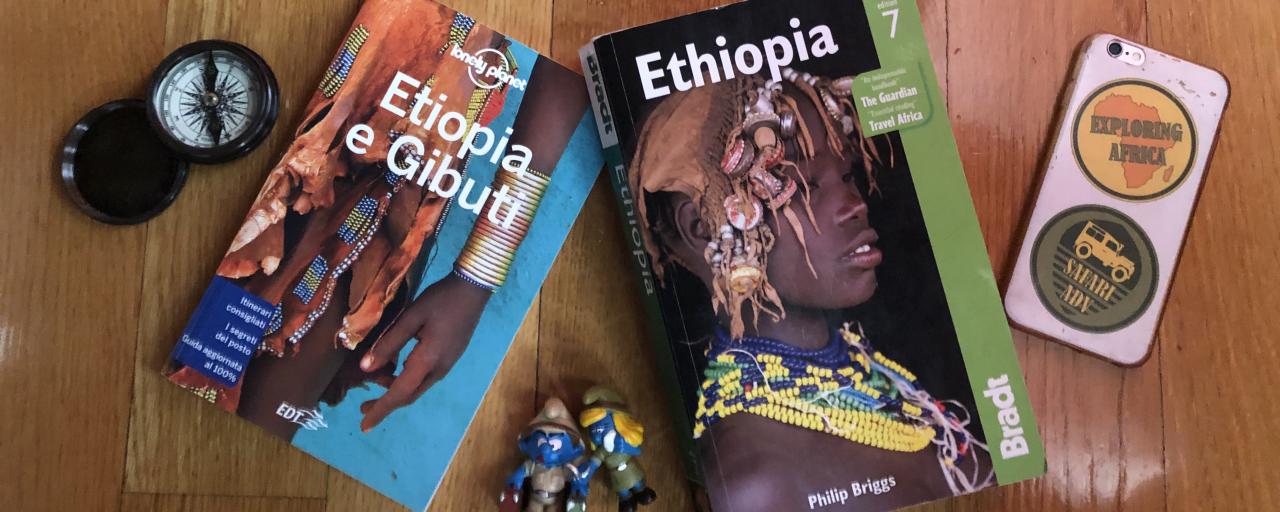Submitted by SafariADV on Tue, 2019-09-10
I had started studying Ethiopia for some time, it was a long time since we wanted to visit this country so rich in history and culture.
Ethiopia is a unique country, it is a crossroad of cultures, a bridge between Sub-Saharian Africa, North Africa and the Middle East
On the one hand the fact of not having undergone a colonization lasting centuries, as it happened to other African countries, on the other the political and cultural isolation of the last decades have contributed to keeping intact the traditions and culture of the different populations who live in this wonderful country.
Ethiopia is a vast country and, in some of its parts, travelling is not very easy, so it is impossible to visit the whole country well in a single trip; it would take a very long time.
In practice Ethiopia can be divided into 3 macro areas that correspond to 3 potential travel itineraries: the North that corresponds to the historical part, the South that represents the cultural and tribal part and the Eastern part that represents the adventure.
For our first time in Ethiopia we decided to visit the South of the country where you can meet many ethnic groups and tribes who, even today, live according to traditional customs and traditions; for a long time we have wished to meet the Mursi, the Hamer, the Konso, the Dorze and the other Ethiopian populations, impossible to meet them all but we intend to visit as many as possible.
Furthermore, although Ethiopia is not one of the most famous countries for safaris, we also want to visit some national parks and protected areas; not many in fact know that the isolation of Ethiopia did not concern men but also animals with the result that here live species typical of the Horn of Africa and that they are not found elsewhere; moreover, in Ethiopia there are more than 1000 species of birds, many of which are native; finally, this country is an important oasis for birds that migratefrom Europe and Asia to the African continent and vice versa.
We have studied our itinerary carefully to maximize our Ethiopian experience; we have designed an itinerary with many destinations, to make the most of our experience.
We will arrive at Addis Ababa, the capital of the country and where the main airport is located.
We will go North to visit Lalibela, where the churches carved into the rock and the Orthodox monasteries are located.
Unfortunately we will not be able to go further North to visit other destinations like Gondar and Axum, we reserve them for another journey more focused on the history of Ethiopia.
From Lalibela we will return to Addis Abeba to which we will dedicate the time necessary to visit its main attractions and then we will leave by car towards the South of the country.
We will touch the towns of Arbaminch, Key Afar, Turmi, Dimeka and Jinka; we will visit different populations such as the Kara (or Karo),the Hamer, the Dassanech, the Mursi, the Aari, the Konso and the Dorze where we will see the Meskel celebration; we will also visit some national parks and natural destinations such as Lake Hawassa, National Park of Nechisar, the Senkele Swayne Harteebeest Sanctuary, the Abidjatta-Shalla National Park and Lake Langano.
Both at Lalibela, at Addis Ababa and in the itinerary to the South we planned to travel with a local guide; the Ethiopians do not speak English, except for a few exceptions, their alphabet is different from the Latin one, so it would be difficult even to interpret road signs or directions, moreover who better than a local person can guide you to discover a country.
The itinerary is ready and flights and hotels are booked, we look forward to leaving to discover Ethiopia!



